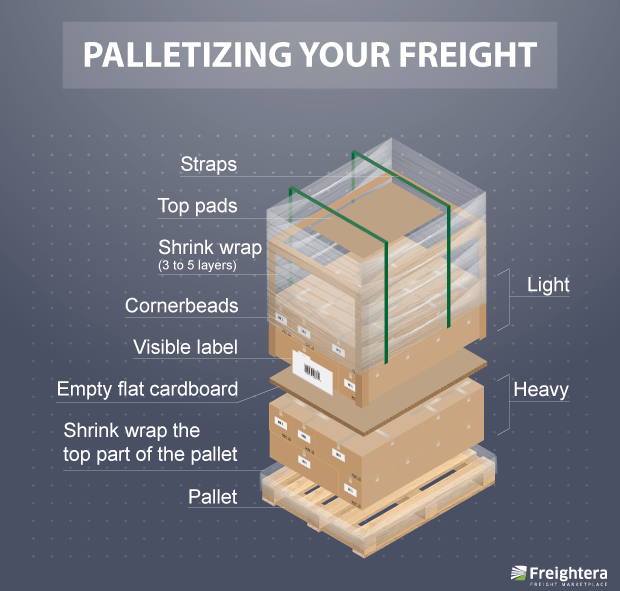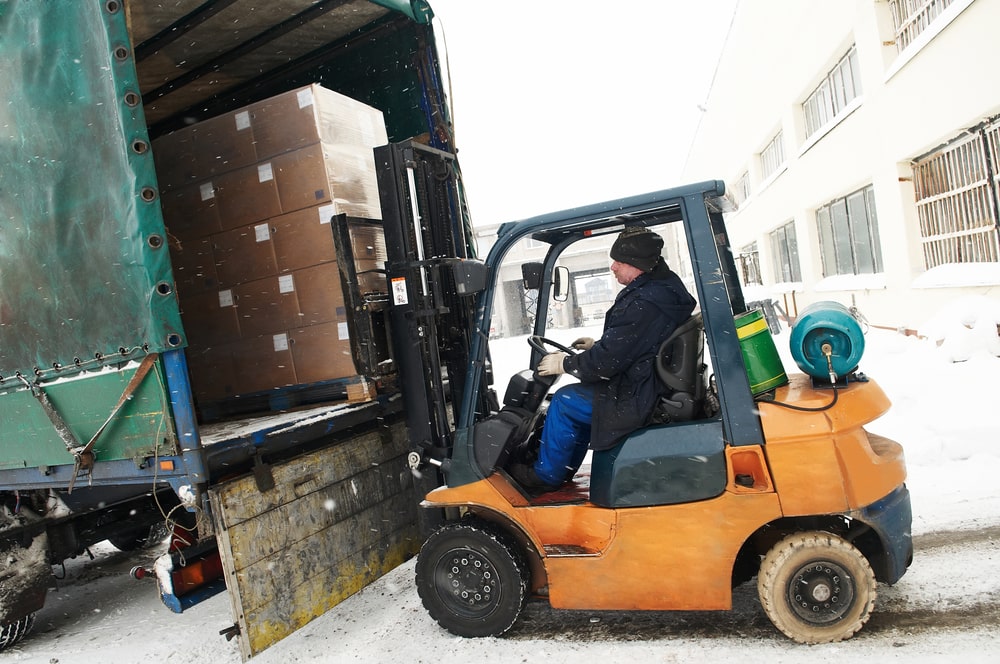9 Wrong (And Costly) Assumptions Freight Shippers Have

Let us Save You Time and Money by Debunking Any False Presumptions You May Have About Freight Shipping
What we’re about to cover goes for experienced shippers and beginners alike. In fact, sometimes the more experienced shipper is more prone to assuming that skipping a step here or there is going to be fine. On the other hand, the inexperienced shipper is more likely to try and make a parallel between shipping a parcel or sending something to their aunt via their dad and shipping freight.
Both types of shippers tend to regret their mistakes when they see the revision on their invoices. So let us save you the headache with this quick read! So read on as we jump right on in!
Why would I need shipping documents? The carrier already has them!
We often get shippers both green and seasoned that, for whatever reason, don’t forward the Bill of Lading and/or the customs invoice to their shipping location. This happens for a number of reasons and some of them are forgetfulness or the assumption that the carrier already has all of the information and paperwork on hand.
The carriers only really need very broad information about the delivery location when arranging a pickup. They need a city, and if they’re being specific, a postal or zip code. That means that they’re missing basically half of the information about your shipment if they don’t get a bill of lading at pickup.
That’s simple. Just forward a bill of lading to the carrier in advance (Or just notify Freightera and we’ll handle the rest).
In order for a driver to bring a BOL with them, they need to be notified of this request and the paperwork needs to be forwarded to them at least 24 hours in advance. That’s because they’re in the field and trucks go back to their docks in the evening when everything is picked up or delivered.
The dispatchers are dealing with a large number of shipments daily and mistakes happen even without them having to handle additional paperwork for each separate truck they’re handling.
And finally, drivers can get a request for a pickup while they’re in the field, making pickups or deliveries. That means there’s no way for them to have the paperwork unless it’s given to them at the time of pickup.
Considering that this happens relatively often, it’s not surprising that the pickup location is expected to have the papers ready at the time of pickup.
It’s a home business! That means it’s a business!
Sounds straightforward, right? Well, not exactly. You probably already know that pickups and deliveries to residential areas or locations come with extra charges. If you didn’t, now you do. This causes some confusion for newer shippers or shippers looking to save some money. If a shipment is going to or from a home business, can it be said that it’s going to/from a business?
Unfortunately, if the carrier sees a residence on the premises, they will treat the location as residential. In other words, if people reside there, it’s a residence and residential charges will be applied.
These grey areas are non-negotiable since carriers would have to spend half of their time simply debating whether a location should be considered commercial or residential. In order to avoid this, rules have been applied which make things easier and more transparent for everyone.
I could get this off the truck myself. We don’t need a tailgate!
Not only should you not do this but, fortunately for you, the carrier will not allow you to in most cases.
Whether carriers should charge for pressing a button on a hydraulic tailgate in order to load or offload a shipment is up for discussion. Making you use a tailgate instead of unloading freight by hand, however, is not. There are very good reasons why these rules exist.
For the carriers, it’s liability and for the people involved it’s safety. Some carriers may look the other way if your shipment is light enough to be taken easily and doesn’t pose a significant risk. A ballpark figure is about 120 lbs in weight. Anything over that is most likely unsafe for unloading by hand.
Stay safe and surprise-free and request a tailgate ahead of time.
Only 1%? No way am I paying for insurance with those odds!
The good news is that less than 1% of all ground freight shipments get lost or damaged. That’s not a bad-sounding statistic until it happens to you.
Save yourself the “What are the odds?” monologue by properly packaging your freight. If your shipment is of value, get additional insurance as an extra precaution.
The standard carrier liability covers about $2/lbs, meaning that for a shipment weighing 1000 lbs, you would be covered up to $2000. That’s why you may want to look into our instant, automated additional insurance options that will allow you to ship worry-free!
It’s written on the paper! The driver is surely going to call us!
Maybe it’s happened to you already: You specified that the driver should call you 30 minutes before pickup in the special instructions section of your BOL so that you can get to your warehouse on time. You wait and you wait and… nothing. You receive an email later in the day that your pickup has been missed.
If this hasn’t happened to you, it would have if you assumed that the driver would see your request before pickup.
Hint: The special instructions section is meant for additional instructions that the driver can use in case your location is difficult to find or access, or if the GPS isn’t accurate for your area.
Drivers are busy, they’re on the road or in traffic and need to constantly pay attention to their surroundings. That means that they won’t always have time to read anything more about your pickup request other than the address and number of skids they’re picking up.
Unfortunately, pickups by appointment are not a thing for LTL shipments as many unforeseen delays may occur due to the nature of the industry. Long loading or unloading times, traffic, broken trucks, etc. Some carriers, however, do have the option of a paid service for calls ahead of pickup that ensures that the driver will give you a call ahead of time. Outside of that, pickup and delivery dates are not guaranteed for LTL shipments.
That’s why you want to make sure that there is someone available to receive or hand over the cargo during standard business hours on the requested pickup/delivery date. This way you ensure that your cargo is picked up without any confusion.
This option’s more expensive! It has to be better!
We’ve done the surveys, so we know that most of our customers appreciate a good price above everything else. And why wouldn’t they?
However, every now and again, there’s a client that needs something shipped fast and reliably without paying much attention to the price.
Since our quoting and booking are mostly automated, it’s very simple to get everything done on your own in a matter of minutes. In such cases, it’s easy for you to go for a more expensive option because it shows a shorter transit time or simply because it costs more.
Don’t fall for this trap. More expensive does not (always) mean that a carrier is better, faster, or more reliable than a cheaper alternative. There are a number of reasons why a carrier may be pricier on a given lane. It is possible that they use a partner for an area that raises the price. An area may be far away from their terminal and they only service it periodically at higher prices.
In some cases, carriers that “don’t like” a specific lane simply say an outrageous price so as to avoid doing it whenever possible. If they have to do it, they at least get paid handsomely for it. It’s a win-win.
That’s why you shouldn’t assume that a price tells you an honest story. Instead, pay attention to our carrier ratings while choosing your quote or, better yet, contact us directly for an expert opinion.
It’s just one extra skid. No way it’s going to be a problem.
A common assumption is that a repackaging of freight or simply adding a pallet to your shipment won’t make a big difference in price. If one pallet costs $100, wouldn’t two be $200 at the maximum? Well, no. In some cases, your price can more than triple for a single pallet.
That’s why it’s strongly recommended that you get a quote for a specific and accurate shipment that you know the details of.
There are several types of pricing in freight shipping and depending on the carrier, your rate can remain quite similar or it can skyrocket really fast.
In general, simply try to make sure that your shipment matches what was quoted and that you’ve packaged your shipment sufficiently and efficiently. You don’t want to overly pad anything so as to avoid paying for shipping air, and you don’t want to change anything without requoting beforehand.
But it was lunchtime! It’s not our fault they came during lunchtime.
This assumption has cost many a shipper their hard-earned money. Missed pickup and delivery fees are, fortunately, easy to avoid. All you have to do is be on-site and available during standard business hours.
If a carrier arrives and attempts to pick up or deliver a shipment while the staff is unavailable or unwilling to assist them, they will leave to handle other pickups or deliveries. Your shipment will be marked as missed.
That’s why we recommend that when you take a break, someone be available to jump in to help the driver with loading or unloading and get back to their break when they’re done. This way, you avoid the extra charges and save yourself delays and the headache of having to wait for the driver the next day too.
You can already tell that the pattern of the solutions is similar. Make sure to do everything in your power to make sure that shipments get where they need to be.
It’s sticking out just a bit. It will be fine!
More broadly, this assumption goes for packaging in general, but protruding material is a common issue with less experienced shippers.
In short, if it’s on a skid it should be properly packaged, right? As we mentioned earlier, this is not the case. Properly packaging your cargo is a multi-step process that ensures that both your and other peoples’ cargo will be safe from damage.
If your shipment is protruding from the skid at all, your best bet is to assume that it’s not going to be accepted by the carrier. This goes from a corner of a container sticking out all the way to pipes that look like they could do more damage than a bullhorn. And no, such pipes aren’t properly packaged if they’re shrink-wrapped either. The first point of contact your shipment should have with any other shipment on the truck should be the pallet. This is the safest way to think about packaging your cargo.
Stay safe and keep your shipment within the (pallet) lines.
Conclusion
Most of us are taught from childhood that it’s bad to assume. Granted, this usually goes for people and first impressions but it’s a good rule of thumb for a lot of things in life and freight shipping is no different.
If you want to save yourself money and trouble, make sure to never assume something will be fine and check everything three times. Five minutes spent on checking now could save you hours down the road (road, get it?).
The last thing to do is get your freight shipping quote and book your shipment. You should be aware of all the little tricky ideas that might creep up on you by now. Ship safely and enjoy!

